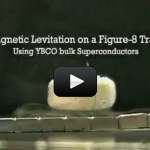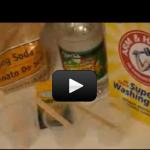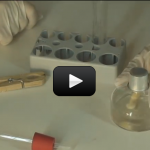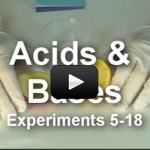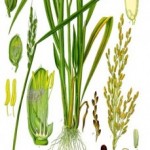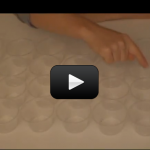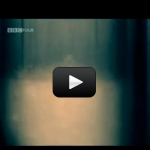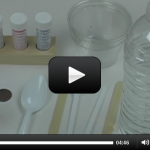By studying tiny bits of matter called atoms, you can figure out why chemicals do what they do – some explode when they touch water (like cesium), while other just sit there for years (like a twinkie). Some chemicals are particularly nasty, like sodium (which explodes on contact with water) and chlorine (which is lethal). but when you combine these two together, you get table salt. So what gives?
Soon you’ll be able to explain everyday things, like why baking soda and vinegar bubble, why only certain chemicals grow crystals, what fire really is made of, how to transform copper into gold, and how to make cold light. Once you wrap your head around these basic chemistry ideas (like acids, polymers, and kinetics), you can make better choices about the products you use everyday like pain relievers, cold compresses, and getting a loaf of bread to rise. Are your ready? This video will get you started with your lesson in molecules:
Soon you’ll be able to explain everyday things, like why baking soda and vinegar bubble, why only certain chemicals grow crystals, what fire really is made of, how to transform copper into gold, and how to make cold light. Once you wrap your head around these basic chemistry ideas (like acids, polymers, and kinetics), you can make better choices about the products you use everyday like pain relievers, cold compresses, and getting a loaf of bread to rise. Are your ready? This video will get you started with your lesson in molecules:
[am4show have='p8;p9;p11;p38;p72;p77;p92;' guest_error='Guest error message' user_error='User error message' ]
If you've ever wondered why two hydrogen stick to an oxygen to form water, then you're in the right place. Let's start by taking a look at the highlights for understanding molecules, atoms, and the tiny universe inside matter.
I don't want you dipping your hands in molten lead or lying on a bed of nails while someone with a sledgehammer breaks a cinder block on your stomach. (It turns out that Dr. Walker has been injured multiple times, mostly through accidents.)
I strongly disagree with his approach - demonstrations of this kind that result in injury are the ones forever burned in the memory of the audience, who are now fearful and have made the generalization that chemicals are dangerous and their effects are bad. In fact, every chemical is potentially harmful if not handled properly. That is why I've prepared a special set of chemistry experiments that include step-by-step demonstrations on how to properly handle the chemicals, use them in the experiment, and dispose of them when you're finished.
Chemistry is predictable, just as dropping a ball from a height always hits the floor. Every time you add 1 teaspoon of baking soda to 1 cup of vinegar, you get the same reaction. It doesn't simply stop working one time and explode the next. I'm going to walk you through every step of the way, and leave you to observe the reactions and write down what you notice. At first, it's going to seem like a lot of disjointed ideas floating around, but after awhile, you'll start to see patterns in the way chemicals interact with each other. It's just like anything else that you try for the first time - you're not very good when you're new at it. Keep working at Chemistry and eventually it will click into place. And if there's an experiment you don't want to do, just skip it (or just watch the video).
One of the best things you can do with this unit is to take notes in a journal as you go. Snap photos of yourself doing the actual experiment and paste them in alongside your drawing of your experimental setup. This is the same way scientists document their own findings, and it's a lot of fun to look back at the splattered pages later on and see how far you've come. I always jot down my questions that didn't get answered with the experiment across the top of the page so I can research it more later. Are you ready to get started?
Scientific Concepts:
- Atoms are made of a core group of neutrons and protons, with an electron cloud circling the nucleus.
- The jiggling motion in atoms is called heat.
- Chemicals form various crystal structures when they freeze. Water is one of the few molecules which expand when changing from a liquid to a solid.
- Endothermic reactions are reactions that absorb heat when they react (like a cold compresses).
- Exothermic reactions release energy in the form of heat, light, and sound (think fireworks).
- A physical change happens when the molecules stay the same, but the volume and/or shape change (like wadding up tissue).
- A chemical change rearranges the molecules and atoms to create new molecule combinations (like a campfire).
- Acids are sour (like a lemon), react with metals, and can burn your skin. They register between 1 and 7 on the pH scale.
- Bases are bitter (like baking soda), slippery, and can also burn your skin. They measure between 7 and 14 on the pH scale.
A Note about Safety
A lot of folks get nervous around chemistry. You can't always 'see' what's going on (are there toxic gases generated from that reaction?), and many people have a certain level of fear around chemicals in general. Dr. Walker, a professor of physics at Cleveland State University (and the editor of Scientific American), states that "The way to capture a student's attention is with a demonstration where there is a possibility that the teacher may die."I don't want you dipping your hands in molten lead or lying on a bed of nails while someone with a sledgehammer breaks a cinder block on your stomach. (It turns out that Dr. Walker has been injured multiple times, mostly through accidents.)
I strongly disagree with his approach - demonstrations of this kind that result in injury are the ones forever burned in the memory of the audience, who are now fearful and have made the generalization that chemicals are dangerous and their effects are bad. In fact, every chemical is potentially harmful if not handled properly. That is why I've prepared a special set of chemistry experiments that include step-by-step demonstrations on how to properly handle the chemicals, use them in the experiment, and dispose of them when you're finished.
Chemistry is predictable, just as dropping a ball from a height always hits the floor. Every time you add 1 teaspoon of baking soda to 1 cup of vinegar, you get the same reaction. It doesn't simply stop working one time and explode the next. I'm going to walk you through every step of the way, and leave you to observe the reactions and write down what you notice. At first, it's going to seem like a lot of disjointed ideas floating around, but after awhile, you'll start to see patterns in the way chemicals interact with each other. It's just like anything else that you try for the first time - you're not very good when you're new at it. Keep working at Chemistry and eventually it will click into place. And if there's an experiment you don't want to do, just skip it (or just watch the video).
One of the best things you can do with this unit is to take notes in a journal as you go. Snap photos of yourself doing the actual experiment and paste them in alongside your drawing of your experimental setup. This is the same way scientists document their own findings, and it's a lot of fun to look back at the splattered pages later on and see how far you've come. I always jot down my questions that didn't get answered with the experiment across the top of the page so I can research it more later. Are you ready to get started?
[/am4show]


